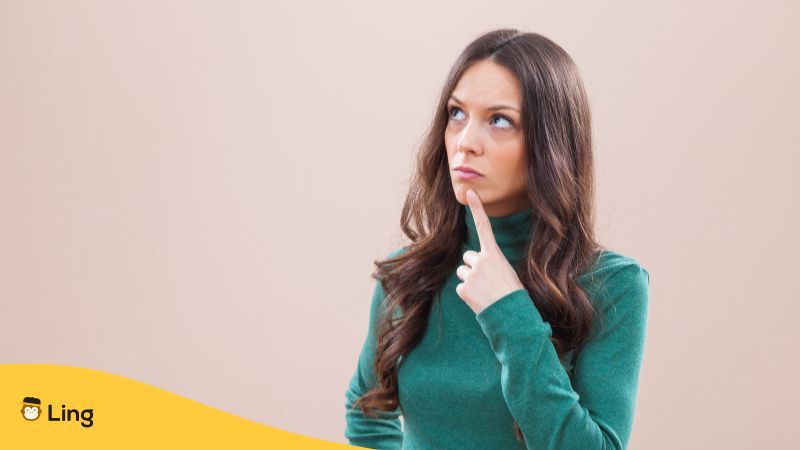Have you ever had a conversation with someone in which you both used the same word, but it had two completely different meanings? If so, you were most likely dealing with a homonym, a word that is spelled or pronounced the same as another word but has a different meaning.
Homonyms can be both fun and confusing in everyday speech, especially for non-native speakers trying to learn a new language. Japanese, in particular, is known for having tons of homonyms due to its unique writing system, which uses a combination of kanji, hiragana, and katakana.
In this blog article, we will explore some of the most common Japanese homonyms, their meanings, and how to distinguish them in a conversation. So, let’s learn Japanese, expand your vocabulary, and impress your Japanese friends!
Page Contents
- How Many Homonyms Does Japanese Have?
- How To Tell Homonyms Apart In Japanese?
- Examples Of Japanese Homonyms
- What Is A Homonym?
- Start Learning Japanese With Ling!

How Many Homonyms Does Japanese Have?
Japanese has a vast number of homonyms: it’s estimated that there are over 1,000 pairs of homonyms in the Japanese language. The reason for this is partly due to the nature of the Japanese writing system, which relies heavily on kanji characters.
Kanji characters can have multiple readings, and these readings can be used to create homonyms. For example, the kanji character for はな (hana) can mean “flower” 花 (hana) or “nose” 鼻 (hana), depending on the context and reading. While homonyms can sometimes create confusion, they add richness and depth to the Japanese language, allowing for creative wordplay and poetic expression.
How To Tell Homonyms Apart In Japanese?
If you’re learning Japanese, you might have come across countless examples of Japanese homonyms. To differentiate between them, you can usually pay attention to the context in which they are used, but here are two more ways to tell homonyms apart in Japanese:
Writing
The Japanese word はし (Hashi) is a homonym that can mean “bridge” 橋 (hashi) or “chopsticks” 箸 (hashi).
Likewise, there are homonym words where one is written in katakana and the other one in kanji. As katakana words are usually foreign words, this can help you guess the meaning.
The fact that Japanese homonyms are not always written the same way is a great help for learners to distinguish them. On the other hand, words that have the same pronunciation but different meanings or (as in this case) spelling are called homophones.
Intonation
It’s also possible to encounter Japanese words that are spelled the same but with a different meaning and sometimes pronunciation. These are called homographs. In some cases, Japanese pitch accents can help you distinguish them.
Pitch accents refer to the different ways a word’s pitch rises or falls. For example, the word hashi, as we mentioned, can mean either “chopsticks” or “bridge.” The difference in meaning is indicated by a different pitch accent: the pitch accent on the first syllable is high for “chopsticks” and low for “bridge.”
So, by paying attention to the difference in pitch, you can learn to differentiate between homographs and also improve your Japanese pronunciation.

5 Examples Of Japanese Homonyms
Here we’ve collected some extremely common words in Japanese that are pronounced the same but have very different meanings.
1. Hi (ひ)
Kanji: 日 – 陽
日 means “sun” while 陽 means “sunlight.” They are two words pronounced almost the same but written with different kanji characters. 日 (hi) refers to the sun itself, while 陽 (hi) refers to the light of the sun or the warmth that comes through sun rays.
2. Ryoushi (りょうし)
Kanji: 漁師 – 猟師
漁師 means “fisherman” while 猟師 means “hunter.” The first kanji characters for these two words are different, but the second kanji character (師), which means master, is the same for both words.
3. Machi (まち)
Kanji: 町 – 街
町 means “town,” while 街 means “street.” The first meaning of 町 (machi) seems to be “town” when you look it up in a Japanese dictionary. However, 街 (machi) is also commonly used for describing a lively street on which there are many buildings and shops.
4. Kaishin (かいしん)
Kanji: 会心 – 改心
会心 means “satisfaction,” while 改心 means “change of heart.” So there are two different meanings with two different writings. 会心 has two kanji characters, which mean “to meet” and “heart.” Whereas 改心 consists of the kanji characters for “revision” and “heart.”
5. Miru (みる)
Kanji: 見る – 観る
見る means “to view,” while 観る means “to watch.” The first kanji changes depending on which action you want to refer to. It’s similar to the difference between “to see” and “to watch” in English.
More Japanese Homonyms
Here are other common Japanese homonyms with the same pronunciation but different writing:
| Pronunciation | Writing | Meaning |
|---|---|---|
| Kanji (かんじ) | 漢字 感じ | Chinese character Feeling |
| Shibou (しぼう) | 死亡 脂肪 | Death Grease |
| Chichi (ちち) | 父 乳 | Father Breasts |
| Kagaku (かがく) | 科学 化学 | Science Chemistry |
| Seikaku (せいかく) | 性格 正確 | Personality Accurate |
| Kousei (こうせい) | 公正 校正 | Justice Proofread |
| Kaihou (かいほう) | 解放 開放 | To set free To open up |
| Au (あう) | 会う 合う | To meet To fit |
| Susumeru (すすめる) | 進める 勧める | To move forward To recommend |
| Hakaru (はかる) | 図る 量る | To plan To measure weight |
Download Ling app today from the Apple Play Store or Google Play Store and start speaking with confidence. Give it a try and see for yourself why Ling is the best language-learning app out there.
What Is A Homonym?
A homonym might sound complicated, but it’s pretty simple. In its dictionary definition, a homonym is a word that has the same pronunciation or spelling as another word but has a different meaning. Basically, it’s two words that have exactly the same sound or spelling but don’t have the same meaning.
Let me give you a few examples. The word “bat” can refer to either a flying mammal or a piece of sports equipment used to hit a ball. “Bank” can mean a financial institution or the side of a river. And “watch” can be a timepiece worn on the wrist or a verb meaning to observe something closely.
Homonyms can sometimes lead to confusion or misunderstandings in communication, so it’s important to pay attention to the context in which they’re used. But they can also be fun to play with and can even inspire puns and wordplay.
Start Learning Japanese With Ling!
Want to learn Japanese and connect with people from Japan? Ling makes learning Japanese fun and easy!
The Ling app will adapt to your learning pace, ensuring that you’re making progress every time you open the app. Ling makes learning fun with interactive games, mini quizzes, and chatbots that keep you engaged and make you feel motivated.
Plus, don’t forget to visit our Japanese blog weekly to learn more about the Japanese language and culture!
Until next time, じゃあまたね (jyaamatane)!
Updated by: Gwyn



































































